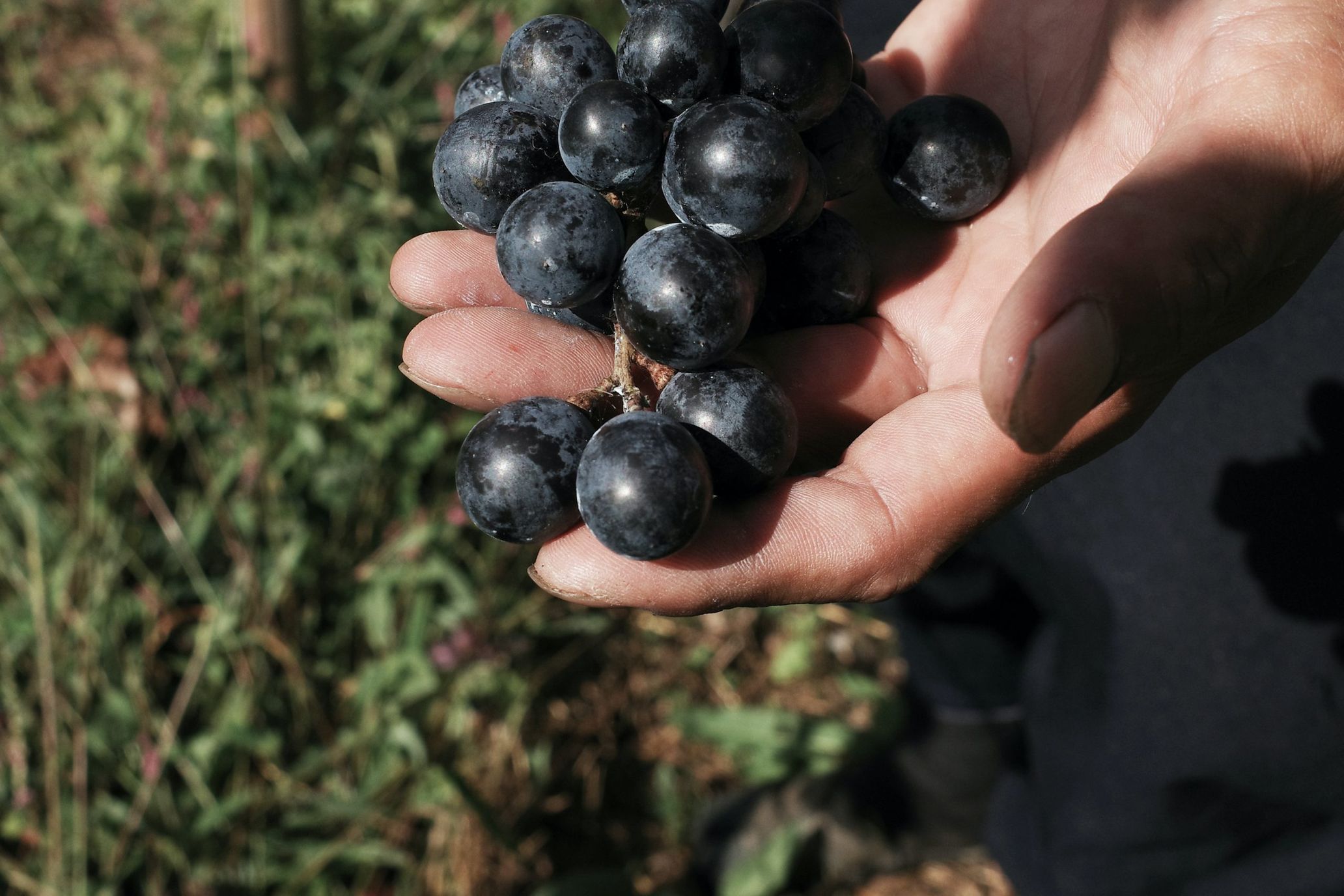Based on the concept of understanding Japanese “tashinami” (sophistication), this series rethinks the essence of Japanese culture through all kinds of people, communities, and phenomena. I spoke to Takehiro Miura, a Yamabushi who runs Yamabiko Winery in the Ohaga area of Misaki, Okayama, about harvesting grapes.
The rice fields of Ohaganishi in Misaki are in the center of Okayama. A sea of clouds appearing over the sequence of terraced rice paddies early in the morning signals the arrival of the harvest season in the region.
In contrast to the dazzling sunshine during the day, morning and night are starkly cold in the Sanyo district. Moreover, the valley has a bowl-shaped terrain where the moisture in the cold air collects at the bottom to form clouds. The view, basking in the sun, is magical.
Takehiro Miura, who runs Yamabiko Winery, peers over the landscape and blows his conch in a good mood. Miura is a Yamabushi of Dewa Sanzan in Yamagata, the ultimate home for the Yamabushi faith in eastern Japan. The view of the satoyama (agricultural flatlands between mountain foothills) in the Ohaga area in Misaki fascinated him, and so he moved there. In part one, I touched on how he started producing natural wine to breathe new life into the beautiful rice fields, named among the top 100 in the country. Since then, the seasons have changed, and it’s become fall. Yes, it’s harvest season.
Like the previous year, he harvested grapes from the vineyard from mid-September to October. I’d like to, however, rewind a bit and start this story from summer.
Not long after my visit in early summer, the rainy season arrived in Misaki; it was a long, record-setting one. It’s a truth that moderate rain is a blessing for any crop. However, generally speaking, wine grapes are sensitive to moisture and mold proliferation. Sunlight is essential for the growth of crops, and many renowned wine-producing regions have a lot of exposure to the sun and good drainage. Meaning, wine grapes don’t require that much rain/water.
The heavy rain that lasted almost a month damaged the grapes at Yamabiko Winery severely. About 90% of the crops were destroyed due to mold growth.
“The condition of the grapes before rainy season was the best it had ever been. It was extremely shocking to see how they were wiped out, basically,” Miura says. It rained so much that he was “fed up with it.” He recalls, “I think we had maybe two days of no rain in one month during the rainy season.” Foreign kinds, especially Chardonnay and Pinot Noir, were almost ruined.
However, there’s little despair on Miura’s face. He’s harvesting grapes from the vineyard, which used to be a former rice field with fallow soil, below his house. He cheerfully heads to the vineyard with his dog, Pino, and a basket. “This is one of the least affected areas. The grapes are called Muscat Berry A, a Japanese variety. I’m planting seedlings of many types now. This one probably fits Japan’s warm and humid climate,” he says. Using scissors, he carefully harvests each grape, removes any insect, dirt, or bad seed, and gently places the grapes in a basket.
Miura says, “Most of the grapes are gone, but it still feels good to be out in the field, doesn’t it?” Compared to the surrounding fallow land, it’s refreshing to walk through the vineyards that Miura has laboriously grown. He continues, “When I’m harvesting grapes here, I feel clear-headed like I’m meditating.”
The joy of being able to work in Ohaga and the gratitude for the harvest—a determination to revive the satoyama with vineyards
Watching Miura, I don’t sense the discouragement of being the owner of a vineyard that lost about 90% of its harvest; I feel his joy of being able to work here and his gratitude for the harvest. I believe his firm determination to revive the satoyama with vineyards is part of this. Sadness doesn’t accompany this determination. Miura has an unwavering sense of fulfillment and duty that derives from discovering something to devote his whole life.
Nonetheless, the current situation is still very arduous. A dramatic drop in harvest will naturally lead to a decrease in wine production, which in turn will lead to a loss of livelihood. Many subsidies are available from local governments to restore abandoned rice paddies. When I ask him if he’s not going to apply for them, he responds, “Those subsidies are available for edible grapes, but as of now, no subsidies are available for grapes used for processing.”
Miura’s purchased his current home from a farmer who had moved from the satoyama to a more accessible area in town. A few greenhouses for edible grapes that the original owner grew are left. “The amount is small, but I’m planning to harvest and make some wine with them,” he says as he leaves for the fields.
In the past, there were gorgeous terraced rice fields in the satoyama. Now they’re being revived by the cultivation of natural wine grapes. Miura, a Yamabushi of the distant Dewa Sanzan, found his calling: to work with nature, something out of people’s control. The 2021 harvest taught him that the hard way. But he hasn’t recoiled one bit. Perhaps this is because he’s deeply involved with the mountains and nature as a Yamabushi.
Using his hands, Miura will make wine with the surviving grapes soon.
Photography Yukihiro Yoshikawa














